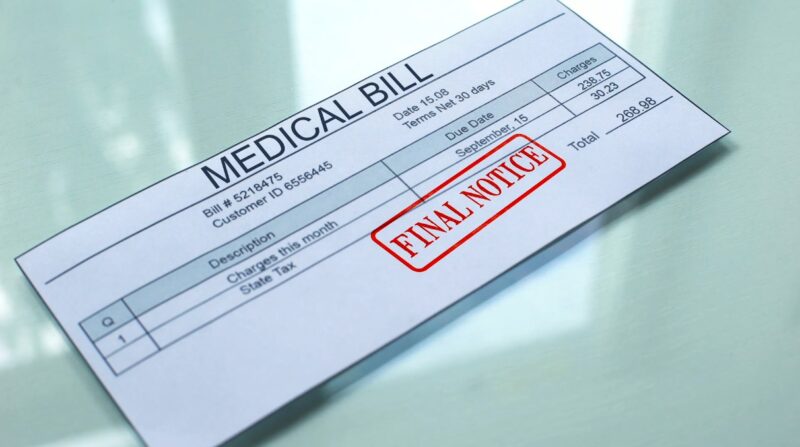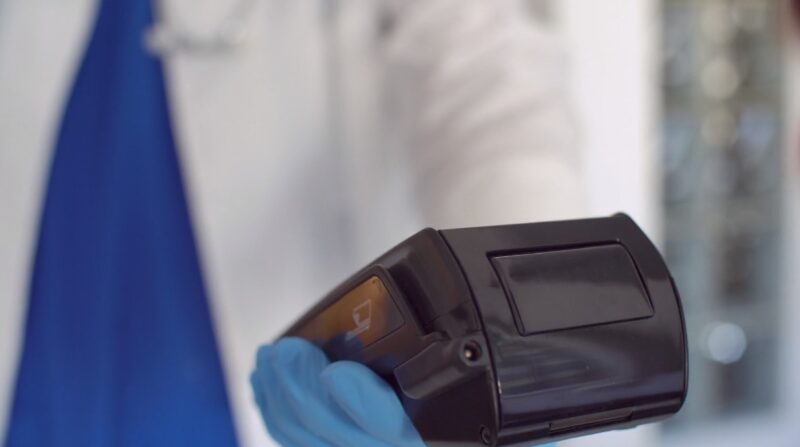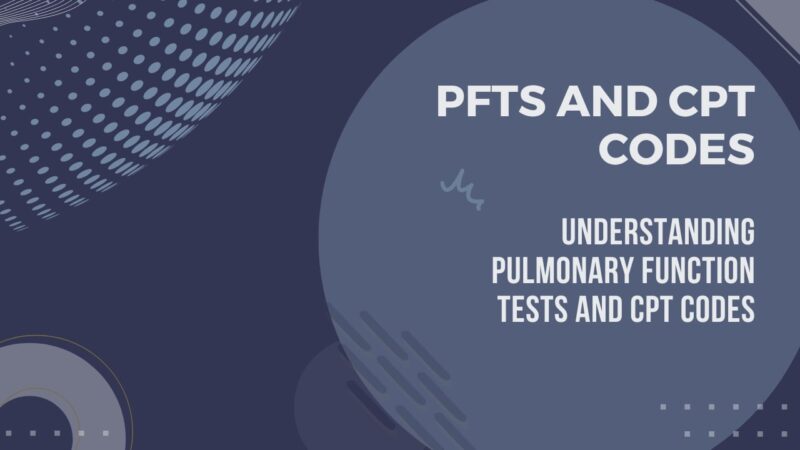In the realm of healthcare, the ability to accurately diagnose and treat conditions is paramount. Pulmonary Function Tests (PFTs) play a crucial role in evaluating lung health and diagnosing respiratory conditions. These tests measure how well the lungs work, providing vital information about lung volume, capacity, rates of flow, and gas exchange.
Concurrently, Current Procedural Terminology (CPT) codes are essential for documenting these services and ensuring appropriate billing. This article delves into the significance of PFTs, the role of CPT codes, and the importance of accurate documentation and coding.
What are Pulmonary Function Tests (PFTs)?
Pulmonary Function Tests (PFTs) are a group of tests that measure how well your lungs work. These tests are used to diagnose certain types of lung disease (such as asthma, bronchitis, and emphysema), measure the severity of lung problems, and check to see how well treatment for a lung disease is working.
PFTs encompass a variety of tests, including spirometry, which measures the amount and speed of air that can be inhaled and exhaled. Lung volume tests measure the amount of air in your lungs, and gas diffusion tests measure how well oxygen passes from your lungs to your bloodstream.
The Role of CPT Codes in PFTs

They are a critical component of the healthcare system. They provide a standardized method for documenting the specific tests and procedures performed during PFTs. These codes are used by healthcare providers to accurately code, bill, and seek reimbursement for services rendered. By using the correct ones, healthcare providers can ensure they are reimbursed appropriately for the services they provide.
Common CPT for PFTs
There are several CPT codes associated with PFTs, each representing a different procedure. For instance, code 94010 represents spirometry, including a graph recording. Code 94060 is used for bronchospasm evaluation, which includes pre-and post-bronchodilator spirometry.
Code 94726 is used for plethysmography for total lung capacity, and code 94729 represents a diffusing capacity test. Each of these codes has specific requirements and modifiers that must be accurately documented.

Proper Documentation
Proper documentation is essential for PFTs. This includes recording the patient’s history, the specific tests performed, the results, and the interpretation of those results. Accurate and detailed documentation is crucial for appropriate CPT coding and billing. Without it, healthcare providers may face challenges in obtaining reimbursement for their services.
Coding Challenges and Considerations
Coding for PFTs can be complex, with challenges such as overlapping or conflicting codes. Additionally, healthcare providers must consider specific coding guidelines, including Medicare policies and local coverage determinations. These considerations can impact the coding process and, ultimately, reimbursement.
Compliance and Reimbursement

Compliance with coding guidelines and regulations is vital when performing PFTs. Accurate coding not only ensures proper documentation of patient care but also impacts reimbursement for services. Inaccurate or incomplete coding can lead to denied claims, resulting in lost revenue for healthcare providers.
For instance, when dealing with conditions that lead to low oxygen saturation, understanding the nuances of coding for treatments like oxygen therapy can be crucial.
Coding Best Practices
To ensure accurate coding of PFT procedures, healthcare providers should follow best practices. This includes staying updated on coding guidelines, using the most specific codes available, and ensuring complete and accurate documentation. These strategies can help maximize reimbursement while maintaining compliance with coding regulations.
Emerging Trends and Updates
The field of medical coding is dynamic, with new CPT codes and changes in coding guidelines regularly introduced. For instance, the American Medical Association (AMA) periodically updates the CPT code set to reflect new services and procedures. Staying abreast of these updates is crucial for healthcare providers to ensure accurate coding and billing for PFTs.
Resources for Learning and Support
Several resources are available for healthcare providers seeking to learn more about PFT coding. The AMA offers a wealth of information on CPT codes, including updates and coding guidelines.
Professional organizations such as the American Academy of Professional Coders (AAPC) and the American Health Information Management Association (AHIMA) also provide resources, training, and support for coding professionals.
FAQs
What is the role of a medical coder in Pulmonary Function Tests (PFTs)?
A medical coder’s role in PFTs is to accurately translate the healthcare provider’s report of the patient’s PFT into the appropriate CPT. These codes are used for billing and reimbursement purposes. The coder must have a thorough understanding of the tests performed, the results, and the applicable coding guidelines.
How often are CPT codes updated?
CPT codes are updated annually by the American Medical Association (AMA). However, interim changes and updates can occur throughout the year. It’s important for healthcare providers and coders to stay updated on these changes to ensure accurate coding and billing.
What is the difference between a CPT and an ICD-10 code?
While CPT describe the procedures and services provided by healthcare professionals, ICD-10 codes are used to classify and all diagnoses, symptoms, and procedures recorded in conjunction with hospital care. In the context of PFTs, CPT codes would be used to document the specific tests performed, while ICD-10 codes would be used to record the patient’s diagnosis.
What are some common errors in coding PFTs?
Common errors in coding PFTs include using outdated or incorrect codes, not using the appropriate modifiers, and insufficient documentation. These errors can lead to denied claims and lost revenue. Regular training and staying updated on coding guidelines can help prevent these errors.
Can a healthcare provider perform PFTs without a certified coder?
While a healthcare provider can technically perform PFTs without a certified coder, it’s not recommended. Certified coders have the training and expertise to accurately the procedures, which is crucial for appropriate billing and reimbursement. Without a certified professional, the provider may face challenges in getting reimbursed for their services.
How can a healthcare provider learn more about coding for PFTs?
Healthcare providers can learn more about coding for PFTs through resources offered by the AMA, AAPC, and AHIMA. These organizations provide coding guidelines, updates, training, and support for healthcare professionals. Additionally, consulting with a certified coder or coding consultant can provide valuable insights and guidance.
Conclusion
Pulmonary Function Tests (PFTs) are an essential tool in diagnosing and managing respiratory conditions. Accurate CPT coding is crucial in documenting these tests, ensuring appropriate billing, and securing reimbursement for services.
Healthcare providers must stay informed about coding updates and follow best practices to ensure accurate and compliant coding. By doing so, they can maximize their reimbursement while providing the highest level of patient care.
In the ever-evolving landscape of healthcare, staying informed and adapting to changes is key. Whether you’re a seasoned professional or new to the field, continuous learning and professional development are essential.
Utilize the resources available, seek expert advice when needed, and strive for excellence in your coding practices. After all, accurate coding not only impacts your bottom line but also contributes to the overall quality of patient care.

